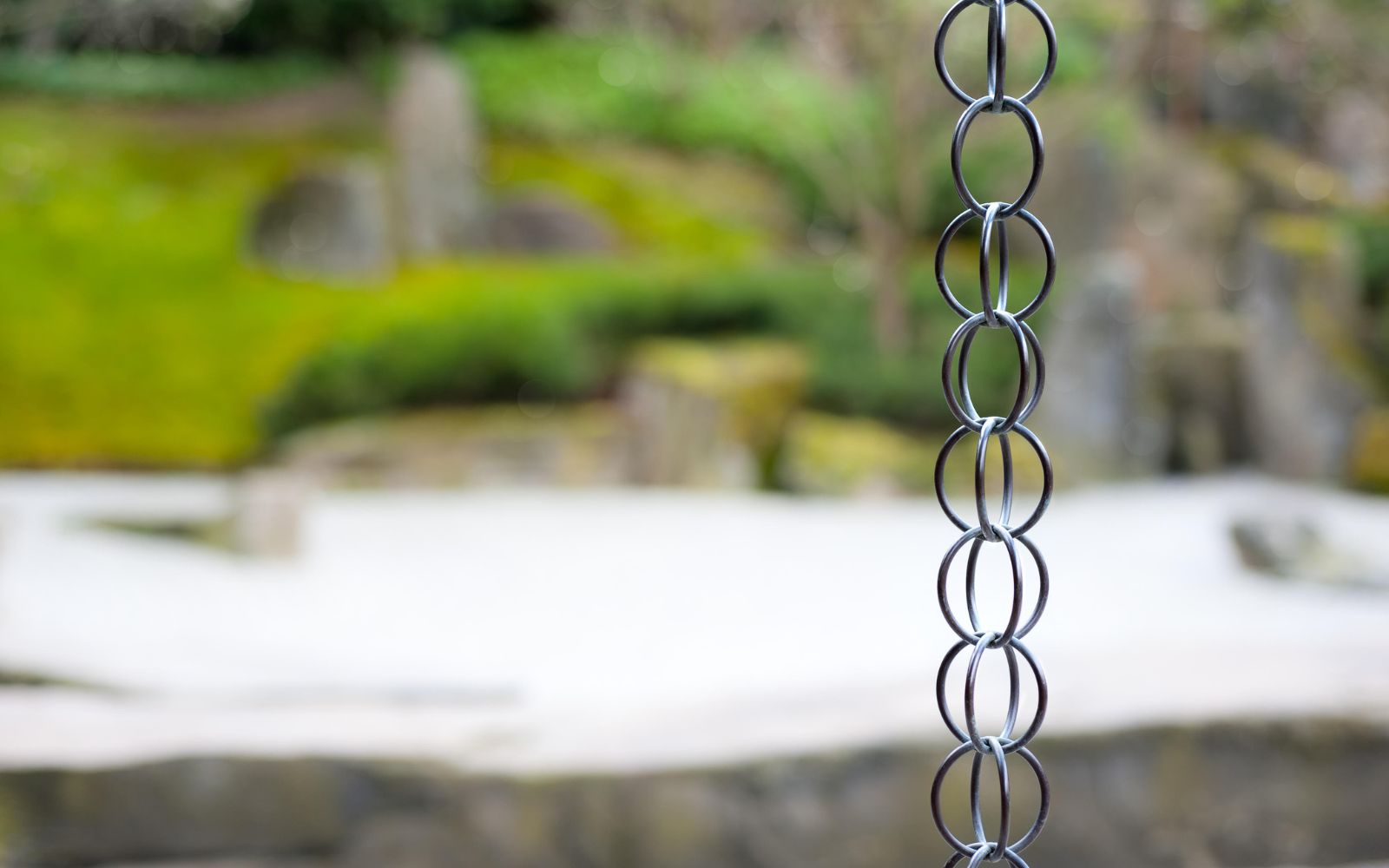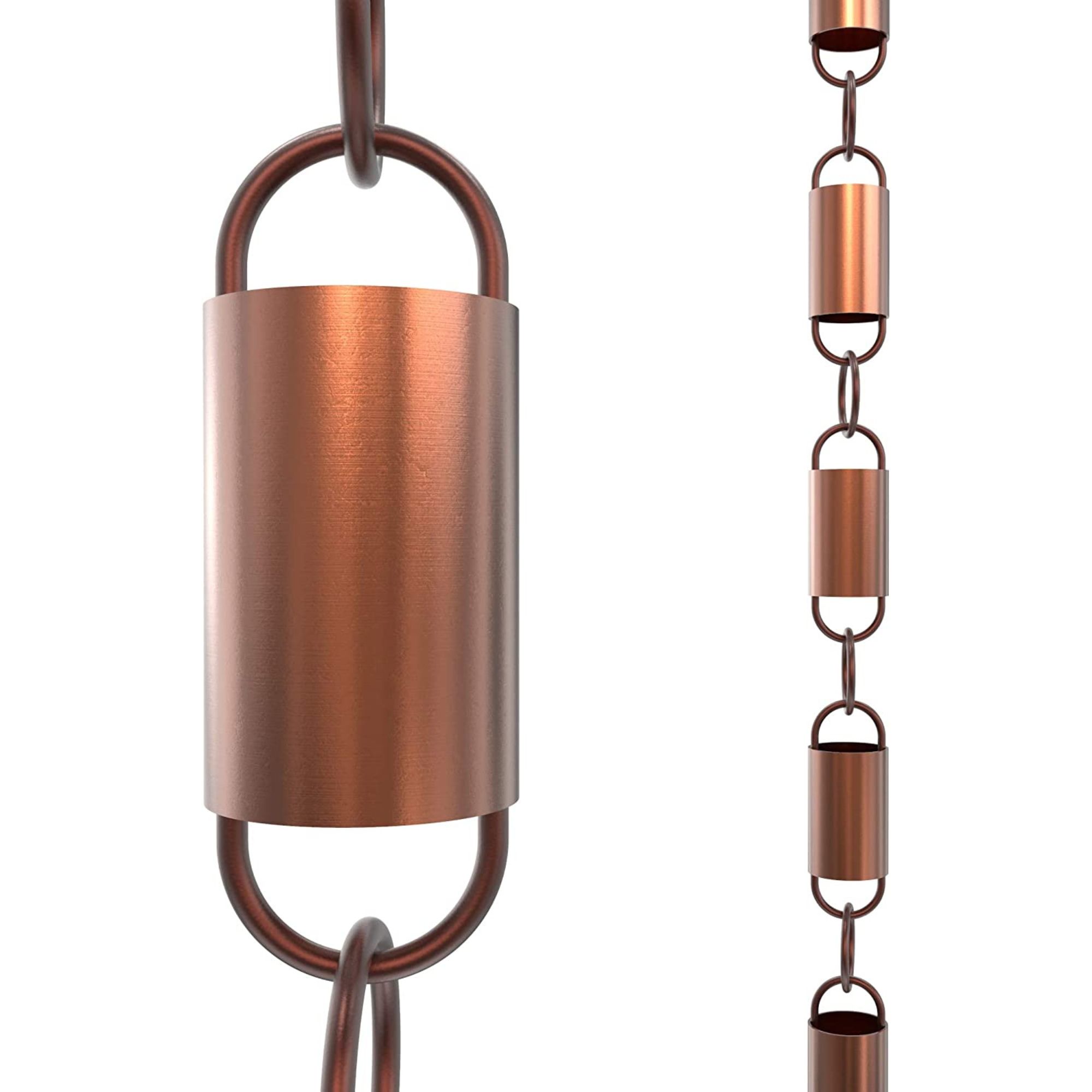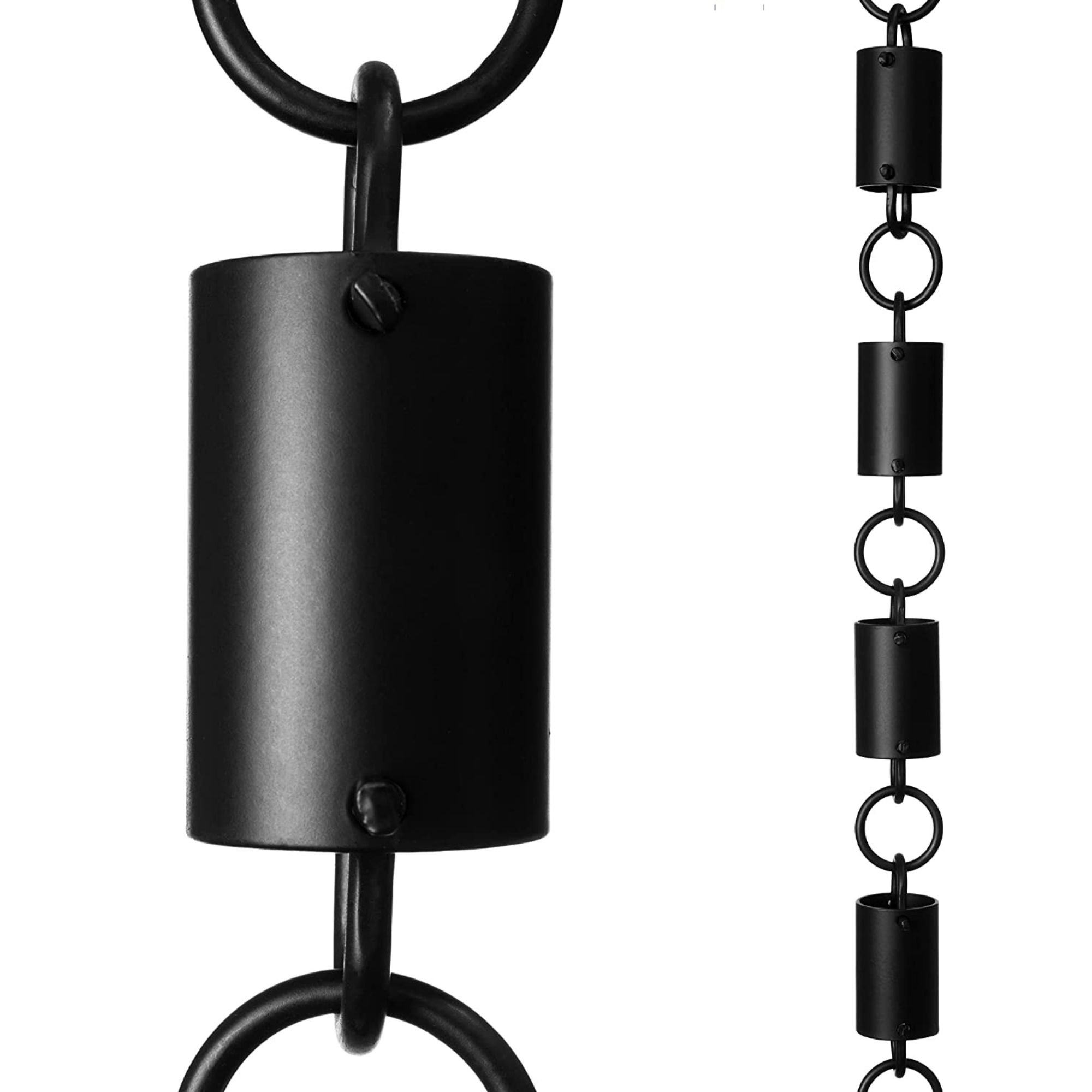Which rain chains are best to buy – and which should you avoid? Landscape experts advise
Some chains are more effective than others, and some are a waste of your money. This is what the experts want you to know


You might think all rain chains are made equal. Not so. Some are really effective at redirecting rainwater, some aren't, and might even lead to damage in your garden and home.
So, we asked landscape experts which they recommend, and which features to look out for, both good and bad.
We've already established whether rain chains are better than downspouts (answer: you can't do without downspouts entirely, but rain chains are a great addition), but which type of chain is strongest again harsh weather conditions?
'Your standard chain link rain chains are best. We’re not saying you should avoid the more ornate options, but they’re definitely not as effective, and if anything, they could actually be damaging the drains and areas around the base of the chain,' says Des Brosnan, a garden maintenance expert at Brosnan Property Solutions.
Which rain chains are best?
These are the landscape expert approved rain chains you can buy now. Below, we explain why.

This is a perfect example of a 'standard' rain chain recommended by Des. It is made using the highest quality materials and craftsmanship to ensure it lasts through harsh weather – and improves curb appeal in the process. This chain also comes with its own hanging hook so that you can enjoy its benefits in a matter of moments.

This 'standard' rain chain comes with a 'functional downspout design' that is specially designed for gutters with a standard length of 8.5 feet. This allows the water to effortlessly cascade down each cup and link on the rain chains to create a beautiful water feature that looks as good while is does good.

This traditional-style rain chain is designed to last – made from a brushed copper that will weather to a beautiful verdigris patina. Its sleek and simple shape allows for a soothing sound when the sound of rain cascades down the chain, from your roof to the ground or rain barrel.
'Standard' rain chains, explains Des, (such as our left-hand choice, above, at Amazon) effectively direct the flow of water toward the ground 'in a relatively orderly fashion.'
The most important thing to consider is the length of your rain chain and whether it is the right size for your property. However, the expert explains that material is also important – as is your pre-existing guttering system that should also be also taken into account.
Sign up to the Homes & Gardens newsletter
Design expertise in your inbox – from inspiring decorating ideas and beautiful celebrity homes to practical gardening advice and shopping round-ups.
'There is a process called electrolysis, which occurs when your gutters are aluminum, and your rain chain is copper,' Des says.
'Basically, the two metals interact and interfere with each other, causing them to degrade over time. Ensure the two metals don’t come into direct contact with one another by installing a barrier between the two; plastic clips are available and will solve the issue.'
What material is best for a rain chain?
'The best option you can go for is a steel option, with galvanized steel working best. If you live in an area that is regularly subjected to high winds and prolonged rainfall, you’ll need galvanized steel,' Des says.
He adds that aluminum chains can work well too, but they may need to be more protected as they will not likely survive harsh weather conditions. Copper is probably the most common option; it’s durable and has that lovely reddy-orange color that looks great.'
Which rain chains to avoid?
If you choose a 'fancier' option, such as one with buckets (for example), your chain could become overwhelmed with gushing water and lead to an overflow of water that will hit the ground below, creating erosion and splashing walls and doors.
'This is especially important to bear in mind if you live in a particularly wet area where gutters can fill up quite quickly and have to deal with a lot of water in a short period of time,' Des says.
'A traditional downspout can handle this and safely direct water to a drain; a regular rain chain won't be quite as effective but will do a solid job, but the more aesthetically focused rain chains just aren't up to the task.'
Rosalie Hoare, the sales and marketing director from Metal Gutta, adds that chains with smaller links work better than larger link chains. 'Plus, if you choose a copper chain, then you get the lovely changing color as the copper oxidizes over time,' she adds.

Megan is the Head of Celebrity Style News at Homes & Gardens, where she leads the celebrity/ news team. She has a history in interior design, travel, and news journalism, having lived and worked in New York, Paris, and, currently, London. Megan has bylines in Livingetc, The Telegraph, and IRK Magazine, and has interviewed the likes of Drew Barrymore, Ayesha Curry, Michelle Keegan, and Tan France, among others. She lives in a London apartment with her antique typewriter and an eclectic espresso cup collection, and dreams of a Kelly Wearstler-designed home.
-
 Renovation Aloha's Tristyn and Kamohai Kalama share the front color you need to sell your home – they explain, 'it's one of the areas you can go a little bolder'
Renovation Aloha's Tristyn and Kamohai Kalama share the front color you need to sell your home – they explain, 'it's one of the areas you can go a little bolder'In Homes & Gardens' exclusive interview with the Kalamas, they explain the renovations to make to the front of your home for property value
By Sophie Edwards
-
 9 things designers always look to buy at an estate sale
9 things designers always look to buy at an estate saleDiscover the sought-after antique and vintage pieces interior designers always look out for at estate sales
By Pippa Blenkinsop